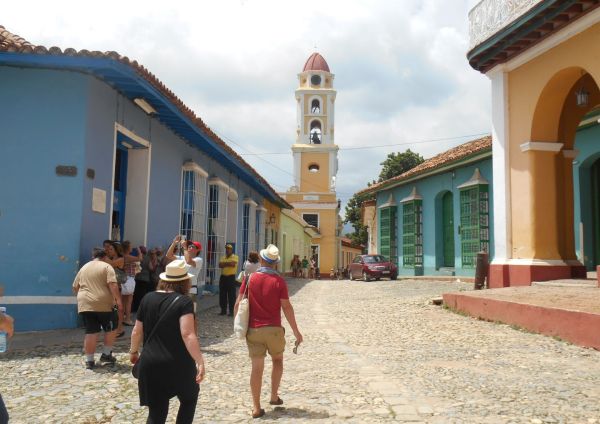Considered by many the engine that drives the rest of the sectors of the national economy, tourism continues to be in the forefront as its leaders, led by Cuban Minister of Tourism Juan Carlos García, have emphasized.
Precisely, the Mesa Redonda (Round Table) television program, which addresses the main issues in the national and foreign arena, revived the issue, dedicating its most recent broadcast to tourism.
From there, the media, both local and foreign, noted the data and elements provided by participants in the program, with a comprehensive review of the matter in the digital newspaper Cubadebate.
They said, for example, that 2023 closed with 2,436,980 foreign visitors, which represents a 70-percent compliance with the plan, accounting for 800,000 additional visitors compared to the previous year, García noted.
However, the minister expressed his dissatisfaction with these figures, since the established goals aim to reach the levels of tourism activity of 2018 and 2019, with the purpose of boosting the Cuban economy.
He noted that globally, the tourism industry is recovering, with a tourism boom in countries like Spain, in Europe and in the Caribbean.
Although growth is not uniform in all regions or countries, strong tourism activity is observed globally.
Despite last year’s results, the minister stated that he does not feel discouraged, since no other country develops its tourism activity under the same conditions as Cuba.
He reaffirmed that the country faces unequal challenges due to the economic blockade imposed by the Government of the United States.
Cuba’s inclusion on the State Sponsors of Terrorism list has serious consequences on the flows of collections and payments, as well as access to bank credit.
In addition, US bank clients are prevented from using cards and other electronic payment methods in Cuba. They also seek to intimidate, sanction and fine foreign institutions that work with Cuba, he stated.
The minister pointed out that these measures hinder payments for international communications and promotional campaigns that must be carried out. He also recalled that the ban on traveling to Cuba for US citizens remains in place, which has a negative impact on the country.
The US market accounts for about 50 percent of tourists in the region, and the ban on US cruise ships traveling to Cuba causes a more than 10 percent decline in arrivals. If this measure were eliminated, Cuba would receive 1.2 million additional visitors on cruise ships.
Despite this adverse outlook, the minister noted that the projection for 2024 is to continue to grow.
He noted that air connections were established with 32 countries through 50 airlines, with an average of 579 weekly frequencies. In 2019, there were 764 weekly flights, although a large part of them corresponded to flights from the United States.
In this regard, the minister mentioned that in 2024, Cuba’s main tourist-sending market, which is Canada, will recover. In addition, Cuban residents abroad are the second market, while Russia rose to third place.
Despite the bans, the United States remains the fourth market, followed by European countries like Spain, Portugal and Germany, and this year we will also work with Latin American countries such as Colombia, Brazil, Venezuela, Argentina, Peru, Bolivia and Mexico.
The minister highlighted the important recovery that was achieved this winter, mainly due to the influence of connectivity despite having only 47 percent of the frequencies that were available in 2019.
 Escambray ENGLISH EDITION
Escambray ENGLISH EDITION





Escambray reserves the right to publish comments.